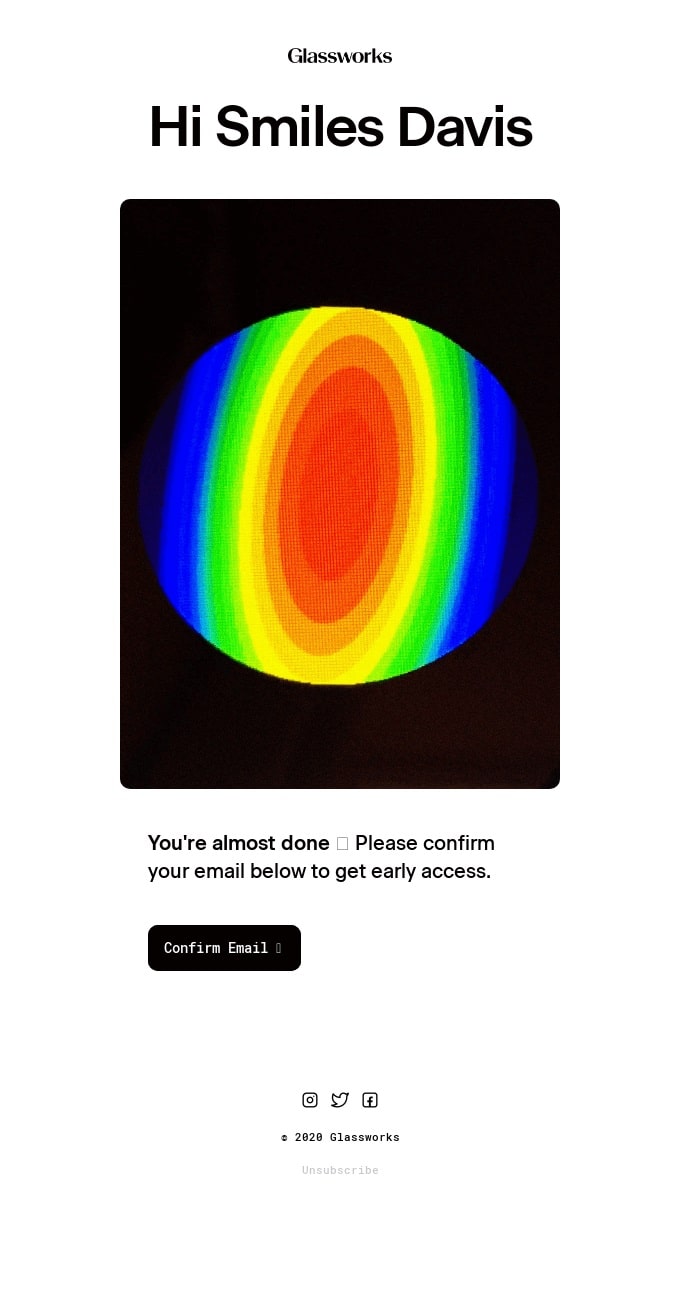What is an Email Bounce?
The term “bounced email” may be taken quite literally: it's a situation when an email is not delivered to the addressee and instead "bounces back" to the sender. The bounce email mechanism is equivalent to the "return to sender" postal stamp on a regular letter. This might occur when the subscriber's server rejects the incoming email. It is never a subscriber’s choice — the reason for bounce is purely technical.
So, basically, a bounced email is the clearest evidence that something is wrong with your campaign.
During your email marketing campaign, it is crucial to monitor bounced emails percentage (aka bounce rate) in the mailing system to be sure that at least 95-97% of emails reach the target.
You will probably recognise a bounce by a status indicator that marks the addresses of clients who could not receive your email because the message was rejected by the email server. A high percentage of returns indicates that the mailing list is outdated, mismatching, or purchased. Providers that process huge volumes of email, such as Hotmail, Yahoo, and Google, constantly collect and analyze statistics on all mailings they receive. Thus, if you have a lot of bounces recorded, this can adversely affect the deliverability of your further mailings.
Types of Email Bounces
There are several types of returns that occur due to different reasons. Services classify them as either "hard" and "soft" bounces.
Hard bounces come from addresses that do not accept emails due to a permanent error (e.g. a non-existent mailbox or an irreparable error at the time of sending).
Soft bounces imply the temporary nature of an error, such as an overflowing mailbox or the temporary unavailability of the recipient's server.
The terms "hard bounces" and "soft bounces" are used to specify whether or not a sender’s mail server should try to send a message to the addressee once again.
Hard Bounces
Marketers also call them critical bounces, meaning there are concrete obstacles between you and your client. Hard bounces occur when the address does not exist or will not receive any messages (or maybe only messages from you) due to whatever reason.
In many email marketing services, email addresses with hard returns are automatically marked as unreachable and immediately removed from active subscribers. This type of contacts is restricted from all future email marketing campaigns.
A large number of such dysfunctional addresses indicates that they could have been entered manually, without proper verification, or that the contact base is outdated. Therefore, email providers set limits for the amount of hard returns. If a mailing campaign generates more than 10% of hard bounces, reputation services can consider the domain as a source of SPAM.
Tip. Try to find an email service that automatically takes care of all the addresses that are impossible to deliver messages to. However, if you don’t send emails to a particular list of recipients for a long time, dead addresses will accumulate in it. Therefore, to prevent any trouble with email providers, we recommend cleaning the database in advance using an email validator service.
Soft Bounces
Soft returns usually indicate temporary setbacks with delivery and are treated differently than hard ones. If an email has a soft bounce, it is immediately tagged as such in the campaign report. Most email marketing services will then keep trying to deliver the email for a certain period of time. If the email is soft bounced again, it will remain in the corresponding tab of the service dashboard. If the email is delivered within the retry period, it will be listed as successful.
If the messages cannot be delivered to an address in a few consecutive campaigns, the soft return will eventually be treated as a hard one, and the email address will be removed from the list. The amount of soft bounces allowed usually ranges from about seven for an address with zero subscriber activity and up to 15 for a subscriber with recent activity.
Tip. Temporary returns require no immediate action from you, as they usually resolve by themselves; however, you should still monitor them.
Reasons Why Emails Bounce
Below are the most typical reasons why hard bounces occur:
- recipient's email does not exist;
- domain name does not exist;
- email address is deactivated: for instance, the employee has left the company;
- email address is blocked;
- email address contains a typo that makes it syntactically invalid;
- spam block event: the recipient's server rejected the incoming email as spam.
As for the soft bounces, these are some of the reasons for them:
- mailbox is full and there is physically no room for an incoming email;
- email server is overloaded or disconnected: this situation may only last for a couple of hours maximum;
- email is too large: all email services set their own limits for incoming emails — usually it cannot exceed the 25 megabyte mark;
- you have been blocked by the domain’s mail provider , because many recipients have labeled your email as spam;
- you have been blocked for being on a blacklist.
What You Need to Do to Reduce Your Email Bounce Rate
1. Practice Proper Contact List Hygiene
Regularly clear your email list of invalid addresses. High bounce rates may seriously damage your sender reputation, and a healthy list will positively affect the delivery speed and the overall performance. Conduct reactivation email campaigns to verify if subscribers are really not interested in your product anymore.
2. Use Double Opt In Subscription
Unconfirmed email addresses may turn out to be non-existent and lead to undesirable consequences. Set up a confirmation email for users that subscribe to your newsletters for the first time. This way you can make sure not just that the user's email address is valid, but that the person is actually willing to receive your emails.
3. Monitor the Delivery Rate
Monitor your levels of email delivery, paying special attention to return rates, as well as the level of response (reads, clicks, etc.). With regular monitoring, you can further enhance your stats.
4. Keep Your Database Up-To-Date
Delete inactive subscribers who did not open or click on the links in your messages for more than six months. Usually, lack of reaction for a long time means that the recipient is not interested in your mailings, and if you continue to send them emails, they may mark your email as spam.
With the help of email address validators, you can reduce the number of hard email bounces. This tool checks your mailing list for spam traps, invalid addresses, and addresses with errors. After validation, you will receive a new mailing list containing only valid addresses.
Conclusion
Most marketers rely on email marketing as an additional tool to increase revenue, but oftentimes some of their efforts go in vain. No matter how beautiful, funny, or useful a newsletter is, when sent to dysfunctional addresses, it won’t pay off. That is why it is important to pay attention to such metrics as delivery rates, delivery speed, and percentage of hard and soft bounces.
So, here we have covered what email bounces mean, their types, reasons, and the ways to prevent them. Now, in order to find out what is happening with your emails, you can use specialized tools. For example, you can use a special integrated platform that will show the destination mailbox location, as well as sender’s domain reputation, spam, and email design analysis. Using such platforms to optimize your email list, you can quickly improve the results of your email marketing as a whole.


 26 july 2022, 14:59
26 july 2022, 14:59
 389
389




